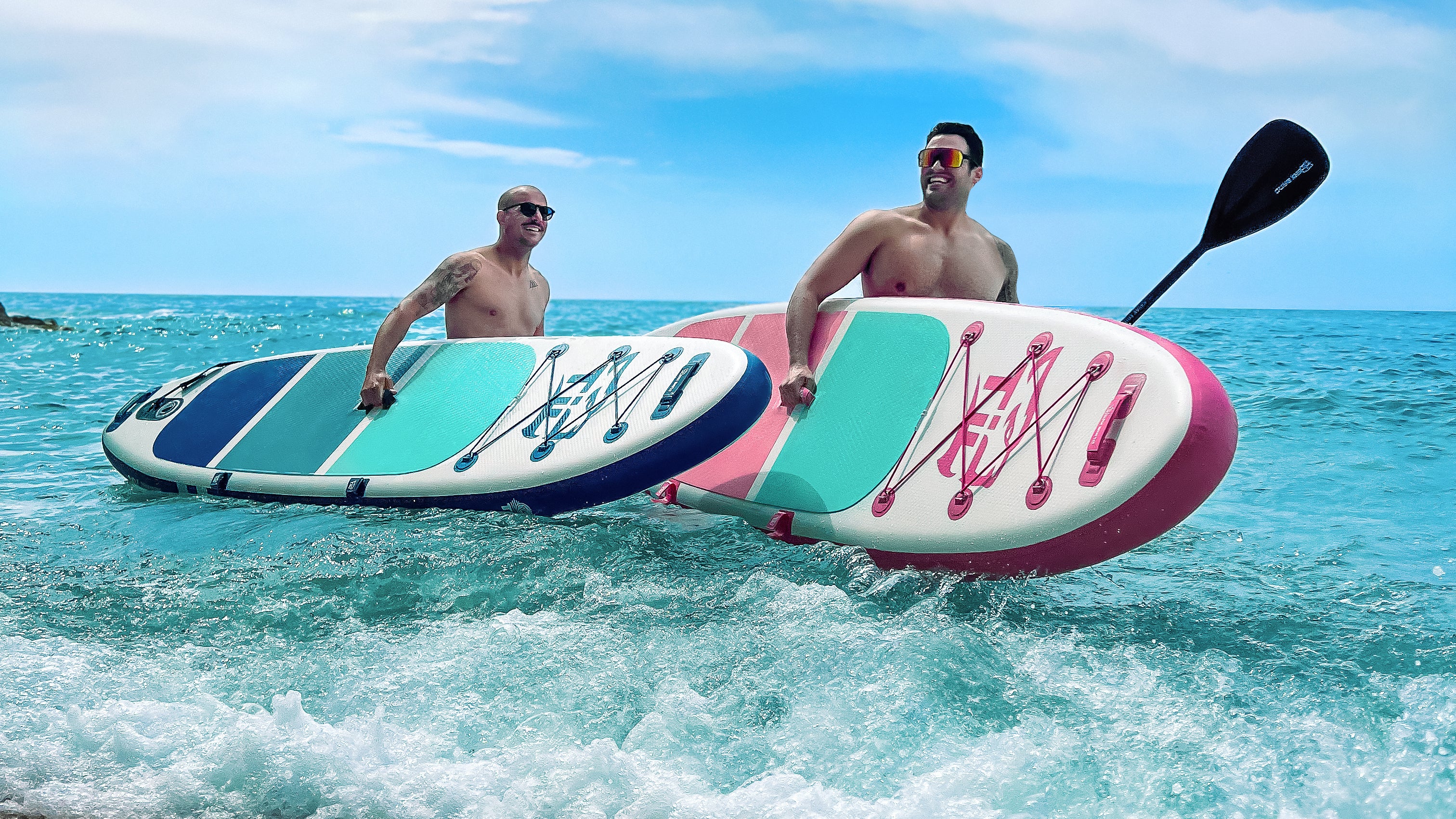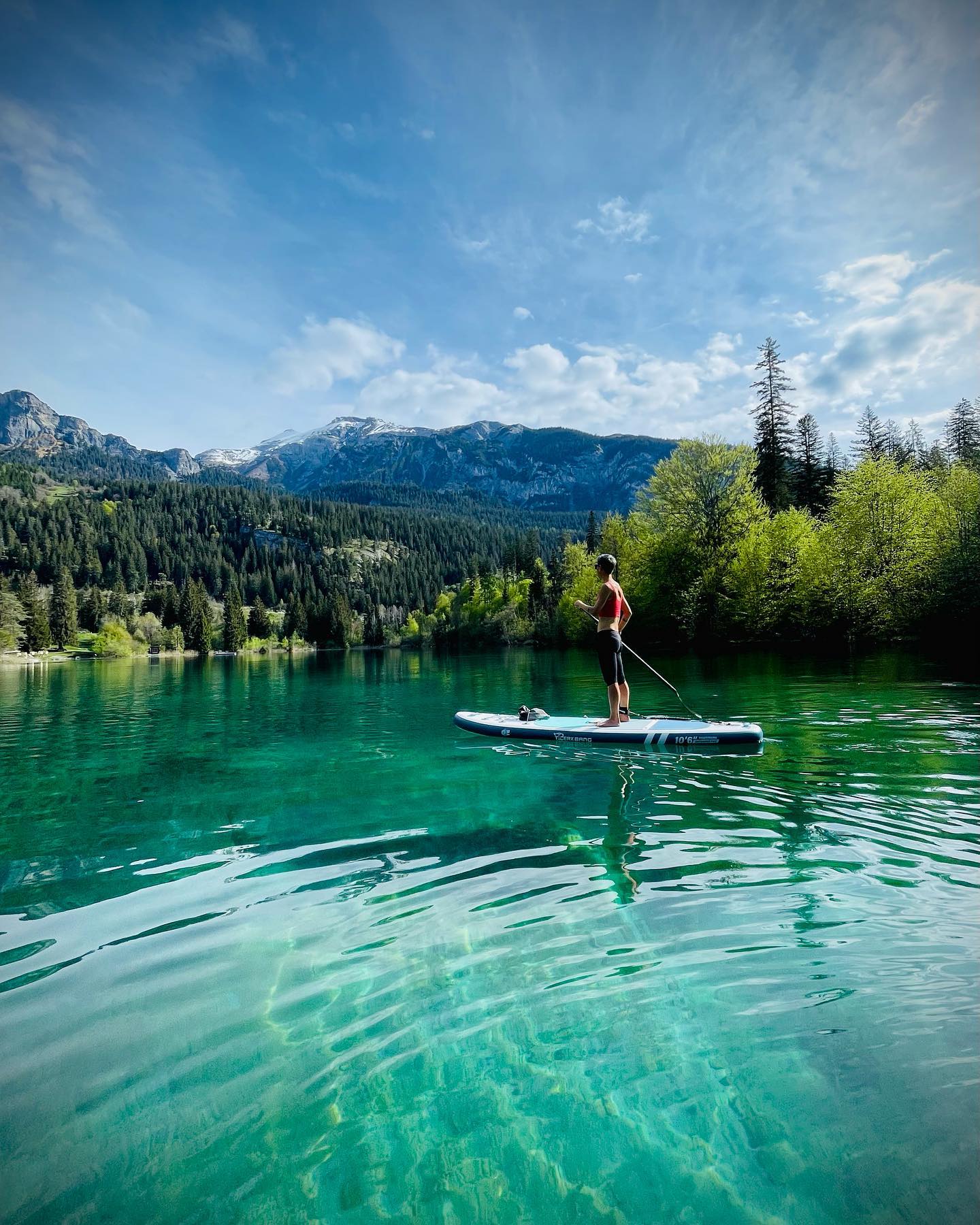Artículo: How to Choose the Perfect SUP/Paddleboard for Beginners?

How to Choose the Perfect SUP/Paddleboard for Beginners?
How to Choose the Perfect Paddleboard for Beginners
Faced with countless paddleboard options in the market, selecting the right one can be a daunting task for beginners. The styles, specifications, materials, types, and structures of paddleboards vary greatly. So, how can you choose a paddleboard that suits you? Let's explore the process step by step.
Purchasing a Paddleboard
1.Types of Paddleboards
2.Materials
3.Paddleboard Specifications
4.Paddleboard Details
Essential Questions for Beginner Paddleboarders
- Can I try paddleboarding if I can't swim?
- Do I have to join a club to try paddleboarding, or can I go to water areas in the suburbs by myself?
- What are the different ways to enjoy paddleboarding? Is it easy to get started?
- Who is paddleboarding suitable for?
- What kind of water areas can I choose for paddleboarding?
- Where can I go paddleboarding in the city?
- When is the best time to go paddleboarding?
- What weather conditions are not suitable for paddleboarding?
Purchasing a Paddleboard
1. Types of Paddleboards
- All-Around Board: This is the most common choice for beginners and also serves as a recreational board. It's excellent for outdoor leisure and family bonding activities, and it's capable of riding small to medium waves in the ocean.
- Surf SUP: These paddleboards are usually shorter than recreational boards but wider than traditional surfboards. They combine the flexibility of surfboards with the stability of paddleboards.
- Touring Board: If you're planning long-distance journeys with extended endurance, a touring board is worth considering. It's suitable for paddling several tens to hundreds of kilometers regularly.
- Yoga Board: To maintain stability while practicing yoga on water, you need a wide board that offers ample space.
- Fishing Board: Fishing boards are wider and more stable, allowing you to carry all your fishing gear.
- Racing Board: With their long, lightweight, and narrow design, racing boards are designed to maximize speed during competitions.
2. Materials
- Inflatable Paddleboard: If you have limited storage space, frequently travel and want to bring your board along, have a tight budget, or consider yourself a casual paddler, an inflatable paddleboard is suitable for you
- Epoxy Paddleboard: Also known as a hardboard, an epoxy paddleboard is ideal if you plan to use it primarily at local beaches or lakes, want to surf with the board, encounter rocky areas in the water, or seek optimal performance, flexibility, and speed.
3.Paddleboard Specifications
Once you've determined the type and material, you need to further understand the specific specifications of a paddleboard.
- Board Size
Generally, longer boards are faster, while shorter ones are easier to maneuver. When deciding on the size of your SUP, consider its intended use:
- Short boards (below 10'): These are great for surfing and/or children. Short boards are more maneuverable, making them perfect for surfing. SUPs designed specifically for kids are usually around 8 feet long.
- Medium boards (10' to 12'): These are predominantly used for leisure and yoga and represent the most common paddleboard size. If you're unsure about the size to purchase, opt for something within this range.
- Long boards (12'6" and above): These are commonly used for racing and long-distance paddling.
- Displacement: Displacement refers to the paddleboard's flotation measured in liters. A higher displacement means the board can support more weight.
- Weight Capacity: It's essential to know how much weight a paddleboard can carry. If you exceed the weight limit, the board will sit lower in the water, making it harder to paddle. Consider your own weight as well as the weight of any additional gear, such as fishing equipment, food, and water.
4. Paddleboard Details
Once you've considered the above points, you'll have a general understanding of the paddleboard you need. Next, pay attention to the brand, craftsmanship, and other details. For example, check if the paddleboard handle allows for balance and easy carrying without pulling to one side. Consider the foot strap, which is designed for left or right foot dominance, influencing your experience. Evaluate the foot pad for comfort and slip resistance. Determine if the storage area is sufficient for long-distance paddling. Additionally, inspect the overall craftsmanship of the paddleboard, such as even application of glue, exposed edges, and the reputation and influence of the brand.
Essential Questions for Beginner Paddleboarders
Q1: Can I try paddleboarding if I don't know how to swim?
Absolutely! Paddleboarding is a relatively safe water sport that allows you to stand, sit, or lie down on the board. The safety leash attached to the board keeps you connected, so even if you fall into the water, you can quickly get back to your board. However, it's crucial to wear a life jacket to avoid unnecessary risks. Keep in mind that not all bodies of water are safe, as you can't see the underwater hazards from the surface. It is not recommended for non-swimmers to try paddleboarding alone!
Q2: Do I have to join a club to try paddleboarding, or can I go to water areas in the suburbs by myself?
Learning and experiencing paddleboarding with a coach or at a club is safer. Professional coaching can help you learn paddleboarding techniques more easily and quickly. Coaches can also provide guidance on water conditions and explain safety knowledge, such as finding safe water areas and identifying dangerous water areas. This ensures a safer paddleboarding experience. If you want to try paddleboarding on your own, make sure to go to safe and open calm-water areas. Also, wear safety equipment such as a life jacket and leash, and most importantly, have someone accompany you.
Q3: What are the different ways to enjoy paddleboarding? Is it easy to get started?
Paddleboarding is relatively easy to get started with, as long as you are comfortable in the water. The main ways to enjoy paddleboarding are paddleboard cruising or professional paddleboard racing. In addition, there are other activities such as paddleboard touring, paddleboard frisbee, paddleboard fishing, and more.
Q4: Who is paddleboarding suitable for?
Paddleboarding is a water sport that anyone can participate in, from children to seniors, as long as they are in good health. However, it is recommended for children above 10 years old and seniors around 65 years old. There are certain groups of people who should avoid paddleboarding, such as those with heart disease, high blood pressure, cardiovascular diseases, etc. Women on their menstrual cycle, pregnant women, those who regularly stay up late or consume alcohol excessively should also avoid paddleboarding.
Q5: What kind of water areas can I choose for paddleboarding?
You can paddleboard in rivers, lakes, reservoirs, river areas, and even the ocean. However, it's essential to choose authorized locations where paddleboarding is allowed. If there are signs prohibiting paddleboarding, you must respect those restrictions. Regardless of the location, always take necessary safety precautions to avoid accidents.
Q6: Where can I go paddleboarding in the city?
You can search for currently open and safe water areas in your city. If you're unsure how to find them, you can use social apps and search for "city + paddleboarding locations" to discover many beautiful water destinations.
Q7: When is the best time to go paddleboarding?
Different seasons offer different experiences for paddleboarding. During spring and autumn, the weather is cooler, so you don't have to worry about heatstroke. However, the water temperature may be colder, so falling into the water accidentally may not be pleasant. Summer is the best season for paddleboarding. Despite the risk of heat-related issues and sunburn, you can enjoy both paddleboarding and swimming, with various ways to play and the opportunity to wear your favorite swimsuit and bask in the sun. In winter, you need to wear thick warm clothing and quick-drying gear. Moreover, many water areas in northern regions freeze, making it challenging to find suitable spots. However, winter paddleboarding allows you to see beautiful scenery that may be unseen in other seasons.
Q8: What weather conditions are not suitable for paddleboarding?
Paddleboarding in thunderstorms can make the water environment complex and dangerous. Windy and foggy conditions can make paddling difficult and reduce visibility. Under no circumstances should you go paddleboarding during a typhoon, especially when strong winds make it challenging to control the board, leading to a higher risk of falling into the water. Always pay attention to the weather and avoid paddleboarding on days with thunderstorms or during typhoon conditions.









